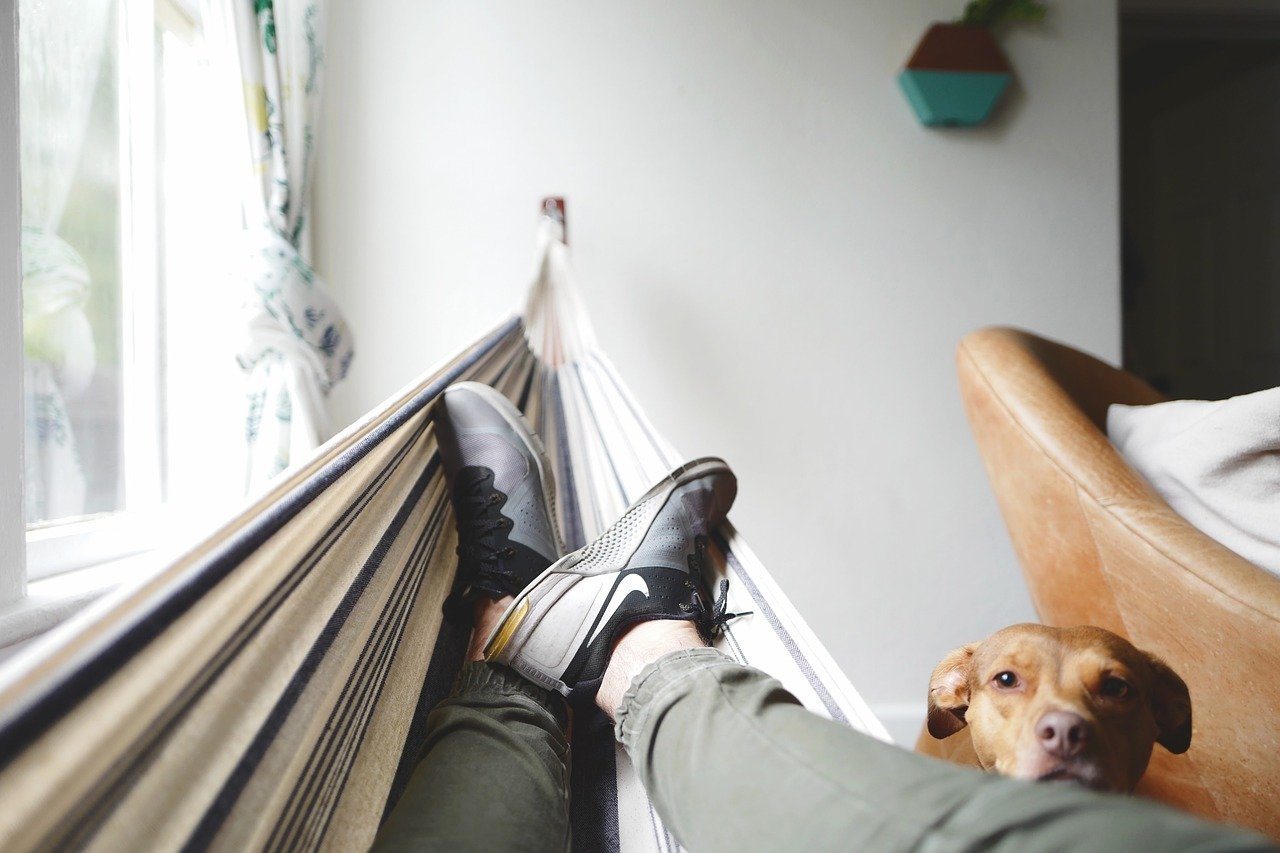Sleeping in a hammock often results in deeper rest for many people, while providing added support for your back. They are also much cheaper than mattresses. Because of this, many want to start sleeping in hammocks at home but wonder about the right hammock for sleeping indoors.

The best indoor sleeping hammocks are Brazilian hammocks, quilted hammocks, or camping hammocks made with soft, heavy duty material. If you have nowhere to hang a hammock indoors, opt for a hammock stand. Depending on your preferences, you may enjoy sleeping on a hammock with a spreader bar.
Thinking of making the switch to a hammock instead of a bed for your home, or just want to have a cozy corner to sleep during lazy afternoons? Look no further, this guide will shed light on everything you need to know about the best hammocks for sleeping indoors.
Table of Contents
Features of the Best Indoor Sleeping Hammocks
Though there are many types of hammocks that you can use indoors, the best ones boil down to Brazilian hammocks because of their specific characteristics, or other camping hammocks made with specific features.
Brazilian Hammocks
Brazilian hammocks are the best choice for indoor sleeping. It’s recognized as one of the most comfortable ways to sleep, and it’s no surprise why: these hammock designs are still widely used in many of the areas of Brazil.
Brazilians have designed these hammock sleeping systems to be extremely supportive and comfortable. They are made from soft, tightly woven and breathable fabric that makes it suitable for any climate, have cotton gathered ends, and in some cases, handmade lace on its edges. They are also known to be very durable.
Traditionally, Brazilian hammocks aren’t made with spreader bars but there are some models in the market today that are already equipped with one. Without a spreader bar, the hammock will naturally wrap around your body, and with it, you’ll get a flat lay which some people find more comfortable for sleeping though it’s primarily a personal preference. Additionally, a Brazilian hammock with a spreader bar is ideal for people who have the space, since the bars do take up a lot of space, while without the spreader bars they are more compact and portable.
Quilted Hammocks
Quilted hammocks are designed with two layers of fabric and usually have a soft filling in between. They are known to be made with soft cloth, making them perfect for indoor use and not outdoors. Many people prefer sleeping on quilted hammocks as opposed to a bed, though they are best suited for cooler climates.
Quilted indoor hammocks provide more support for the head and back, making it ideal for people who tend to have stiffness or pains in these areas from sleeping on a mattress. The type of fabric used in these types of hammocks range from polyester, canvas, linen, or cotton among others.
These hammocks are intended for people who enjoy sleeping on a flat lay, since it won’t cocoon you the way a Brazilian or other camping hammock would. They typically have wooden spreader bars on each end that allow you to maximize the hammock’s width, which come with the added benefit of making it more stable and easier to get into. Another benefit of quilted hammocks is that they are made from solid fabric, without the stitching gaps or rope holes of other hammocks, making it a great choice for families who have young children.
Other Factors to Consider in a Hammock for Indoor Sleeping
Best Hammocks for Sleeping Indoors
Here's a few hammocks available on Amazon that we'd personally recommend to check out when you're shopping for a hammock to sleep indoors on:
- Hammock Sky Brazilian Double Hammock
- Vivere Double Cotton Hammock
- Double Hammock Indoor and Outdoor Hammock
- Tintonlife Brazilian Double Hammock
Frequently Asked Questions
Is it bad to sleep in a hammock every night?
Sleeping in a hammock has been shown to have numerous health benefits, such as helping you fall asleep faster and deeper, and supporting back health. There are some studies proving that it’s one of the healthiest sleep systems to choose from.
However, poor sleep or pain resulting from long-term hammock use usually is the product of sleeping in a low-quality hammock, or using the incorrect sleeping posture for a hammock. As long as you have chosen the correct indoor hammock and use it correctly, sleeping on a hammock every night can be good for you.
Do you need a pillow for sleeping in a hammock indoors?
There’s no need to use a pillow in order to sleep comfortably indoors while on a hammock. If you are able to find the right sleeping position which is comfortable for you, you might be surprised at how well you can sleep on it without a pillow.
How to make sleeping on a hammock indoors more comfortable?
There are some things you can do to make your sleep on an indoor hammock even more enjoyable. For one, don’t forget the pillow; if you sleep with a pillow in bed, then you’ll most certainly want a pillow (or two) in your hammock. You might also want to cover yourself with something during the colder evenings, such as a blanket.
It’s also important to think about your sleeping position. As a general rule of thumb, sleeping diagonally is recommended. However, don’t be afraid to experiment and move around to see if you find another position that works well for you.
